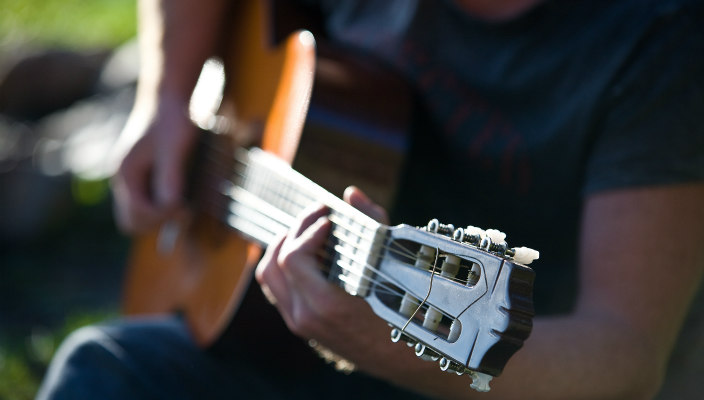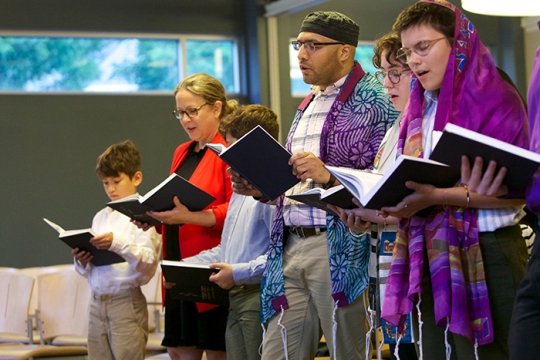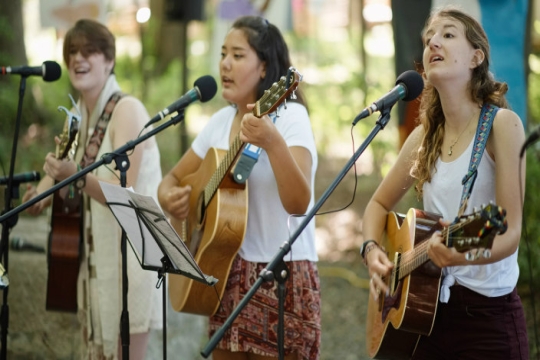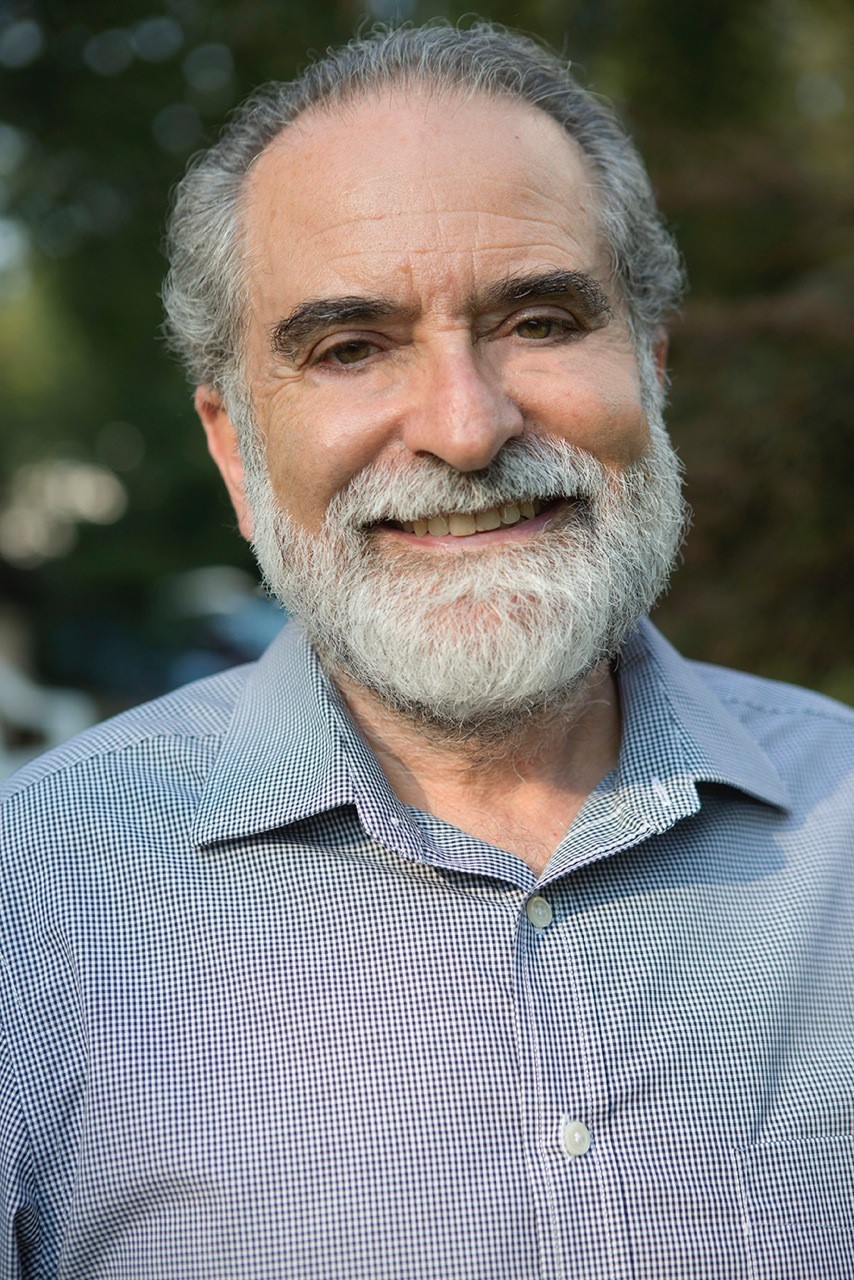
Synagogue music experienced a radical transformation in the late 1960s, as sing-along tunes that originated in youth group and camp settings replaced the earlier performance-oriented style. The duo, Kol B’Seder, made up of Rabbi Daniel Freelander, then a voice major at the Hartt School of Music, and Cantor Jeff Klepper, then a Kutz Camp-trained song leader, helped usher in the new era of Jewish liturgical folk music. Their 1973 setting of “Shalom Rav,” like Debbie Friedman’s “Mi Shebeirach,” have since become so ubiquitous worldwide as to be considered traditional.
I asked Rabbi Freelander, who is now executive director of the World Union for Progressive Judaism, how a small cadre of camp-based singer-songwriters launched a revolution that got Reform Jews singing in the pews.
ReformJudaism.org: If I were to worship in a typical large or medium-sized Reform temple in the 1950s and ‘60s, what would I find musically?
Rabbi Freelander: You’d be listening quietly to inspirational liturgical music played on the organ and performed by the cantor and a professional four-part choir. The rendition of the Shema Yisrael prayer would most likely have been composed by Salomon Sulzer in Vienna 100 years earlier, reflecting the musical fashion of the time.
When did the shift to congregational singing accompanied by guitar begin, and what was the catalyst?
The transition began in the mid-sixties and was influenced by a number of dramatic events, including the anti-Vietnam war movement, the rise of black power and ethnic self-affirmation, and Israel’s stunning victory in the Six-Day War. It was in this period that Israeli songs entered the Reform Jewish repertoire. For example, Nurit Hirsh’s, “Oseh Shalom,” written immediately after the Six-Day War, resonated with Reform Jews, becoming a liturgical mainstay in only a matter of months. Not only were many Israeli songs instant hits, the Reform Movement switched pronunciation from the Ashkenazic to the Sephardic-Israeli pronunciation of Hebrew, as, for example, from yisgadal veyiskadash to yitgadal veyitkadash.
What were some of the other musical influences that led to the emergence of homegrown Reform Jewish songwriters in the 1960s-70s?
In the late 1960s, Israel started the Chassidic & Folk Festival, which produced a lot of creative, sing-along Jewish music. At the same time, Shlomo Carlebach wrote dozens of soulful, catchy melodies that had the same rhythms as popular protest songs and worked well for congregational group singing.
UAHC (Union of American Hebrew Congregations, now Union for Reform Judaism) camps played a big role by serving as incubators for Jewish composers like Michael Isaacson, who worked at Kutz Camp in the late 1960s. Debbie Friedman, z’l, started writing music in 1970 at Olin-Sang-Ruby Union Institute (OSRUI) in Wisconsin. When Jeff Klepper and I began writing music in 1971, Union camps gave us a venue and opportunity to stay up late and experiment with new melodies. The next day we’d try them out in the dining hall or at a worship service. If the group liked the song, we refined it; if they didn’t, we threw it away and started again.
How did camp music find its way to the synagogue?
The Reform youth organization, NFTY, played a major role. Specifically, in 1971, Loui Dobin, then a high school senior (now director of URJ Greene Family Camp), compiled 20 of the best songs in an album called NFTY Sings. Eight more albums would follow, each containing the songs’ words and chords. So in every camp you would see kids, some of them future song leaders and cantors, learning songs from these sheets.
When the NFTY albums stopped appearing in the late 1980s, Debbie Friedman, Jeff Klepper, and Jerry Kaye, camp director of OSRUI, started Hava Nashira, an annual song leading workshop, which, for 25 years has been a safe place for Jewish songwriters to experiment and exchange music.
It would take a decade before the liturgical music developed in the camps and at Hava Nashira entered the congregational mainstream, the same amount of time it took for NFTY and camp alum to become the next generation of rabbis, cantors, and board members of congregations.
What do you think will be the lifespan of the current fashion in Reform synagogue music?
Today’s synagogue music is no more sacred than was the 19th-century choral style. Some tunes will endure and others will fall by the wayside as fashions change. The only thing that makes a song or musical setting traditional is the willingness of Jews to choose it over and over again.
Our “Shalom Rav” is widely used in the Reform Movement today, as is the beautiful “Shalom Rav” written at about the same time by Ben Steinberg for organ and choir. Someday our rendition will go out of fashion and someone else’s will become dominant – as it should.
Have something to say about this post? Join the conversation in The Tent, the social network for congregational leaders of the Reform Movement. You can also tweet us or tell us how you feel on Facebook.
Related Posts

Register Now for Hava Nashira 2021

How a Songleading Fellowship Will Help Teens Lead the Way

